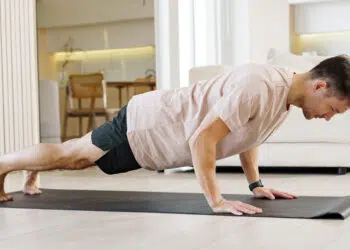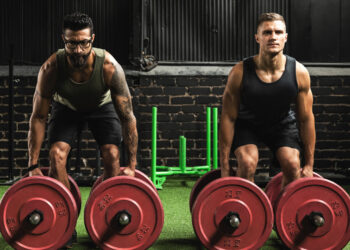Bodyweight exercises are often said to be safer than many free weight and machine strength training exercises. And while this is a sweeping generalization, in a lot of cases, it’s true. It’s much harder to hurt yourself doing push-ups or bodyweight squats than it is bench presses or heavy back squats.
That said, your form and previous injury history will also affect your injury risk, and even luck can play a part because sometimes injuries happen even if you do everything right.
However, there are a few bodyweight exercises that are riskier than others and that are more likely to result in injury. In addition, there are better, safer exercises that you can do instead.
After all, if there is a safer but equally effective alternative to an exercise that could result in injury, it makes sense to use it, right? After all, if you are injured, you won’t be able to train, and that means any progress you’ve been made could end up being lost. Talk about a waste of time! When it comes to training long, hard, and often, safety is important.
Avoid the following exercises and do the equally beneficial but safer alternatives instead.
1- Chair and Bench Dips
Chair and bench dips work your triceps, which is the muscle on the back of your upper arm. They also work your deltoids or shoulder muscles, and pectoralis major or chest as well. However, they also force your shoulders into a very extended position, putting a whole lot of stress on your already fragile acromioclavicular (AC) joint, which is the joint between your scapular and clavicle bones.
Level Up Your Fitness: Join our 💪 strong community in Fitness Volt Newsletter. Get daily inspiration, expert-backed workouts, nutrition tips, the latest in strength sports, and the support you need to reach your goals. Subscribe for free!
Unlike regular parallel dips, which this exercise is often used to replace, chair or bench dips often cause your hips to swing forward and away from your hands. This increases shoulder extension at the bottom of each rep.
Alternatives:
Work the same muscles with less AC stress by replacing chair and bench dips with the following exercises.
Close Grip Pushup
This push-up variation increases triceps activation while putting much less stress on your shoulders.
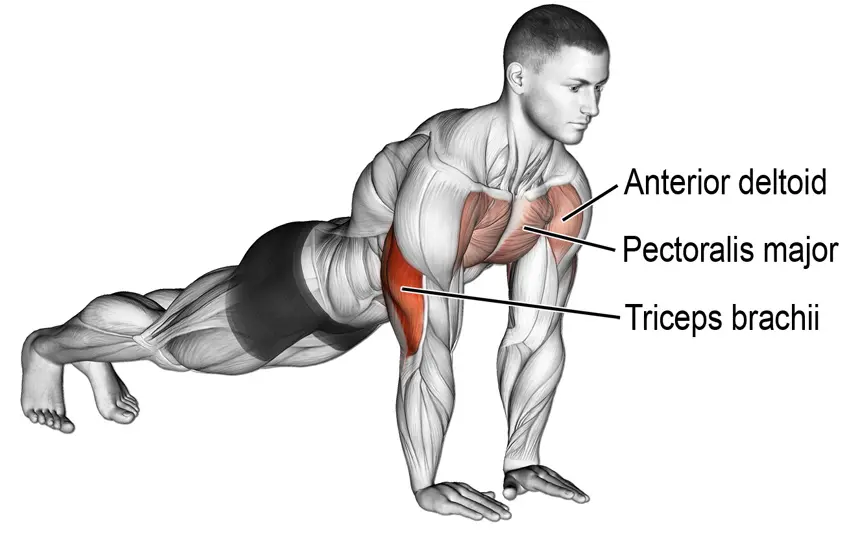
- Squat down and place your hands on the floor, about 12-inches apart. Walk your feet back until your legs and body are straight. Pull your shoulders down and back to stabilize your shoulders. Tuck your arms in close to your body.
- Bend your arms and lower your chest down to within an inch of the floor. Do not let your hips sag.
- Push yourself back up and repeat.
- Bend your legs and rest on your knees if full push-ups are too hard.
Two chair dips
Instead of having one chair or bench behind you, use two chairs so you won’t have to extend your shoulders so much.
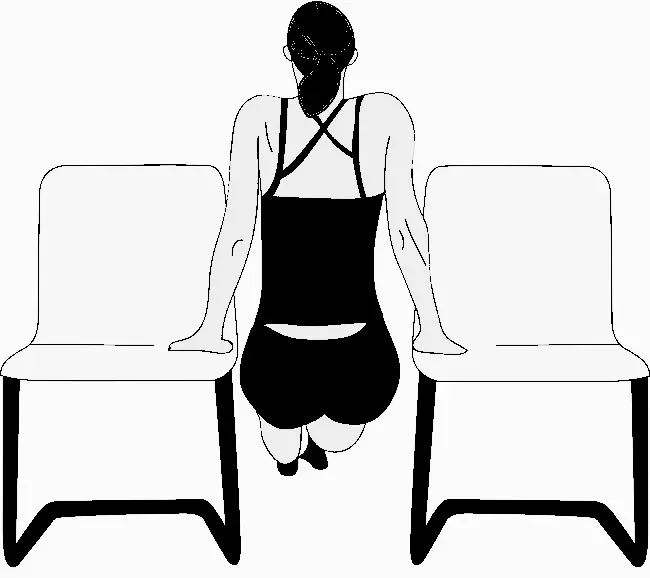
- Place two chairs about shoulder-width apart. Stand between them and place your hands on the seats. Extend your legs out in front of you, feet on the floor.
- Bend your arms and descend until your elbows are bent to around 90-degrees. Keep your torso upright, hips directly under your shoulders.
- Push yourself back up and repeat.
- Do this exercise between two strong chair backs for a more demanding workout.
2- Sissy Squats
Sissy squats are a tough quad exercise from the golden era of bodybuilding. They involve leaning back and rising up on to your toes to overload the thighs, and especially vastus medialis. However, it also puts a tremendous amount of stress on your knee joints. Sore knees are something all lifters want to avoid, so you should look for less risky alternatives.
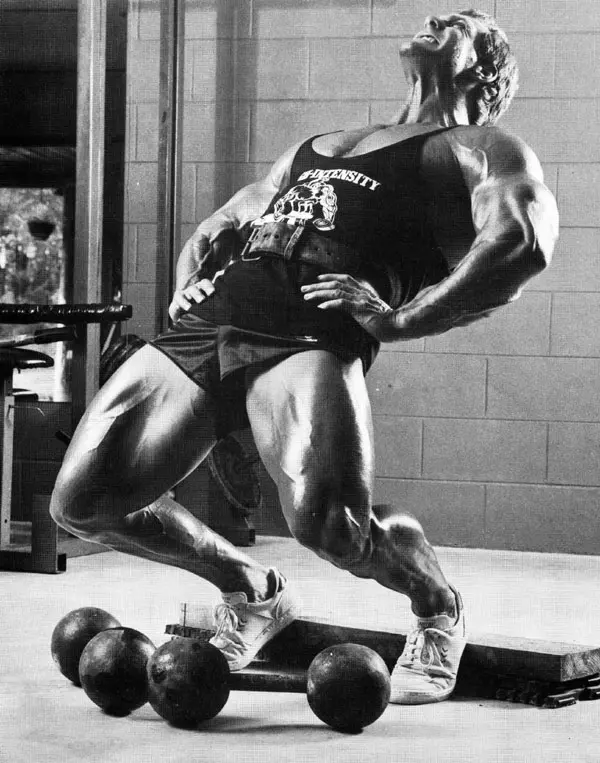
Alternatives:
Use the following exercises to build your quads without damaging your knees, using nothing more than just your bodyweight.
Short step lunges
Lunges work all of your major leg muscles, but taking a shorter than usual step increases quadriceps activation.
- Stand with your feet together, hands by your sides.
- Take a small step forward, bend your legs, and lower your rear knee down to within an inch of the floor. Do not let your front knee extend forward of your toes.
- Push off your front leg and stand up, returning to your original starting position.
- Repeat by leading with the opposite leg. Alternate sides for the duration of your set.
Rearfoot elevated split squats
Also known as Bulgarian split squat, this exercise will build and strengthen your quads plus improve your balance and mobility.
- Stand with your back to a knee-high chair or step. Bend one leg and place your foot on the bench behind you. Hop forward and into a split stance.
- Bend your legs and lower your rear knee down to within an inch of the floor. Most of the weight should be on your front leg.
- Stand back up and repeat. Rest a moment and then do the same number of reps on the other leg.
3- Burpees
Burpees are an effective but very demanding exercise. Unfortunately, for some people, they’re just too hard to do safely, especially if you are tired or lack core strength. If you are fit and strong, there is no need to drop burpees from your program but, if they hurt you (and not in a good way), you should choose an alternative.
Level Up Your Fitness: Join our 💪 strong community in Fitness Volt Newsletter. Get daily inspiration, expert-backed workouts, nutrition tips, the latest in strength sports, and the support you need to reach your goals. Subscribe for free!
Problems with burpees include:
- Collapsing into a deep squat and hurting your knees
- Dropping your hips during the push-up and hurting your lower back
- Rounding your lower back as you jump your feet back up to your hands
- Landing heavily after the squat jump
Alternatives:
These burpee alternatives are easier on your joints but will still deliver an effective workout. Use them in place of burpees, or while building your fitness and strength so you can do burpees properly.
Stripped-down burpees
This exercise omits the push-up and mid-air leap, making them much less demanding than full burpees.
- Stand with your feet together, hands by your sides.
- Squat down under control and place your hands on the floor, just outside your feet.
- Jump or step your feet back and out into the push-up position.
- Jump or step your feet back up to your hands.
- Stand up straight and then repeat.
Mountain climbers
This bodyweight cardio conditioning exercise is much less stressful than burpees but works many of the same muscles.
- Adopt the push-up position with your arms and legs straight.
- Brace your abs, bend one leg, and pull your knee up and into your chest.
- Drive that leg back and pull your other leg into your chest.
- Keep pumping your legs for the duration of your set. The faster you go, the harder this exercise becomes.
4- Crunches and Sit-ups
Crunches and sit-ups are popular ab exercises, but they can cause back problems too. The repetitive spinal flexion can put a lot of stress on your lumbar spine, and especially the intervertebral disks. Also, if you put your hands behind your neck and pull with your arms, you can hurt your neck too. There are definitely better ways to work your abs than sit-ups and crunches, even if you are training at home.
Planks
A lot of people write planks off as being too easy. That’s because they are doing them wrong. Performed correctly, 15-30 seconds of planking should be all you need.
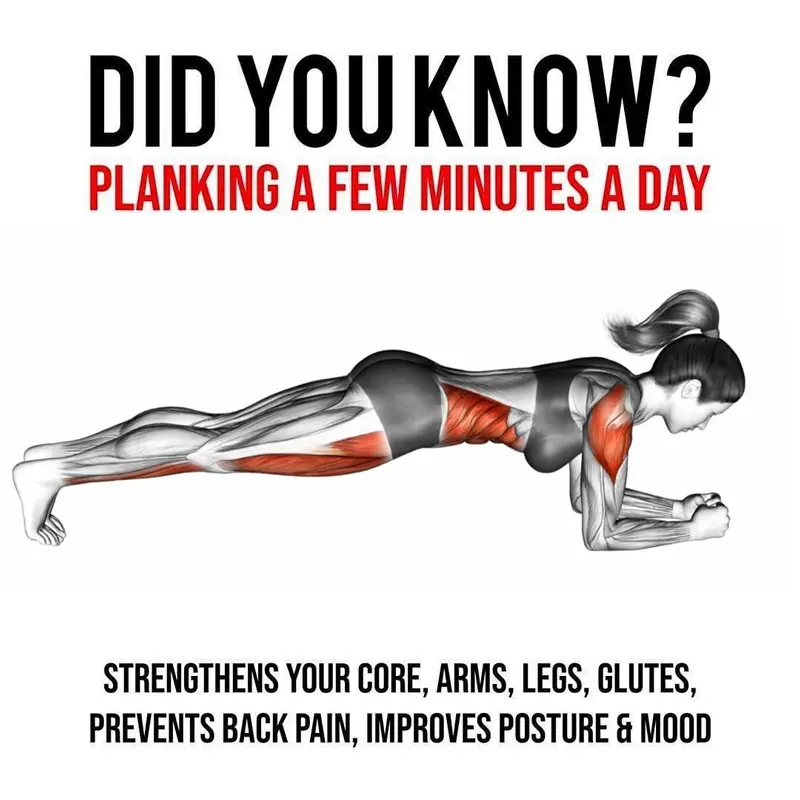
- Lie on your front with your arms bent and forearms extended in front of you. Clasp your hands together if you wish.
- Lift your hips off the floor and straighten your legs. Tuck your chin in and extend your neck. Brace your abs as hard as you can without holding your breath.
- Try to pull your elbows in toward your feet and your feet in toward your elbows while keeping your body perfectly straight. Generate maximal muscular tension.
- Stop when you are no longer able to contract your muscles to the max.
L-sits
This challenging exercise will leave your abs begging for mercy. It’s a great alternative to doing hundreds of spine-wrecking sit-ups or crunches.
- Place two push-up stands on the floor, about hip-width apart. Alternatively, use a couple of bricks or even some thick books. Sit between them and place your hands on top, fingers pointing forward. Extended your legs out in front of you. Your body should be in an L-shape.
- Extend your arms and lift your legs and butt off the floor. Keep your abs braced! Hold your position but not your breath for as long as possible.
- Make this exercise easier by bending your legs and pulling your knees in toward your chest. If you have long arms and good flexibility, you may also be able to do this exercise without placing your hands on blocks.
5- One-arm Push-ups
One-arm push-ups are one of the coolest-looking exercises around. Working your chest, shoulders, triceps, and abs, they are definitely demanding and a logical step up from regular push-ups. However, for a lot of exercisers, they are too hard to do correctly and result in contortions and cheating that will increase your risk of injury.
If you can do one-arm push-ups properly, there is no need to drop them from your program but, if you can’t stabilize your shoulder, arm, core, or hips while doing this exercise, it’s time to try something less risky.
Alternatives:
These options, like one-arm push-ups, put more load on one arm and provide a good progression from regular push-ups. However, they are much safer.
One-hand elevated push-ups
This variation reduces how much force you can generate with one arm, putting more stress on the other. This is an excellent way to prepare your body for the demands of real one-arm push-ups.
- Adopt the push-up position with one hand on the floor and one on a raised surface, such as a yoga block, medicine ball, or single push-up stand. Shift your weight over onto the hand on the floor and use the raised arm for assistance only.
- Bend both arms and lower your chest down toward the floor.
- Push yourself back up and repeat.
- Make this exercise harder by moving the raised surface further away from you.
Staggered Push-Ups
Like the previous exercise, this exercise puts more stress on one arm while allowing you to use your other arm for balance and assistance. You don’t need any equipment for this exercise, so it’s especially useful for home use.
- Drop down into the push-up position with your arms and legs straight.
- Move one hand down and in so it’s closer to your hip than your shoulder.
- Bend your arms and lower your chest down to the floor. You should have more weight on your upper arm than your lower arm.
- Push yourself back up and repeat. Rest a moment, and then swap sides.
FAQs
Do you have any bodyweight training questions? We’ve got answers! If you can’t find the information you are looking for below, drop us a line in the comments section, and we’ll get back to you as soon as we can.
I do these exercises all the time, and they don’t cause me any problems – do I have to give them up?
Providing you are fit and strong enough, you may be able to do these exercises correctly and without problems. That said, they are high-risk exercises, and just because you haven’t hurt yourself yet doesn’t mean you won’t. When judging the value of any exercise, you should always consider the benefits versus the risk. If there is a safer way to achieve the same results, it makes sense to choose the lowest risk option.
So, you don’t HAVE to give up these exercises, but you might want to consider if the risk outweighs the benefits and if you are storing up problems for the future.
An exercise not on this list causes me pain. What should I do?
Intense training is often painful, but it’s crucial to be able to differentiate between “good” pain and “bad” pain. Good pain is usually very brief and occurs in the muscles you are training. Invariably it’s a burning that vanishes while you rest between sets. Bad pain usually affects your joints or is much sharper. It may not subside when you rest.
If an exercise causes the good type of pain, you should just suck it up as it’s part of getting fitter and stronger. If you suspect it’s the wrong type of pain, you should stop what you are doing and review your form. If you are still hurting, and providing you aren’t injured, seek out less stressful alternatives.
My trainer makes me do these exercises. How can I get him to change them?
Some trainer’s qualifications are out of date so they may not be up to date with the latest developments in exercise science. They may also have been lucky enough never to have injured a client or themselves. If you don’t want to do these (or any other) exercises, ask your trainer to provide an alternative.
Explain that you feel these exercises cause the wrong kind of pain, and you are worried about injuring yourself. If they are a good trainer, they will accept your feedback and respond accordingly. If they ignore your comments, it may be time to look for another trainer.
In know famous athletes who did these exercises, so why can't I do them too?
Many athletes are elite, not because of the type of training they did, but because they managed to survive it! Elite sportspeople are often much more robust than the rest of us. They can tolerate exercises and training methods that would leave more average folk in the dust.
There is no need to try and emulate these people, and doing so could lead to injury. Just because your favorite athlete did hundreds of one-arm push-ups or sissy squats does not mean you should. Also, many athletes end up with serious issues once their competitive careers come to an end. Exercise should be healthful and not destructive.
Wrapping up
A lot of trainers say that there is no such thing as bad exercises and that the person doing the exercise is the problem. While this opinion does hold some truth, there are definitely some exercises that are riskier than others.
Use your common sense and choose exercises that provide the most significant benefits for the least amount of risk. After all, you want to stay fit, strong, and healthy long into old age, and not just for a few months or years, right?





